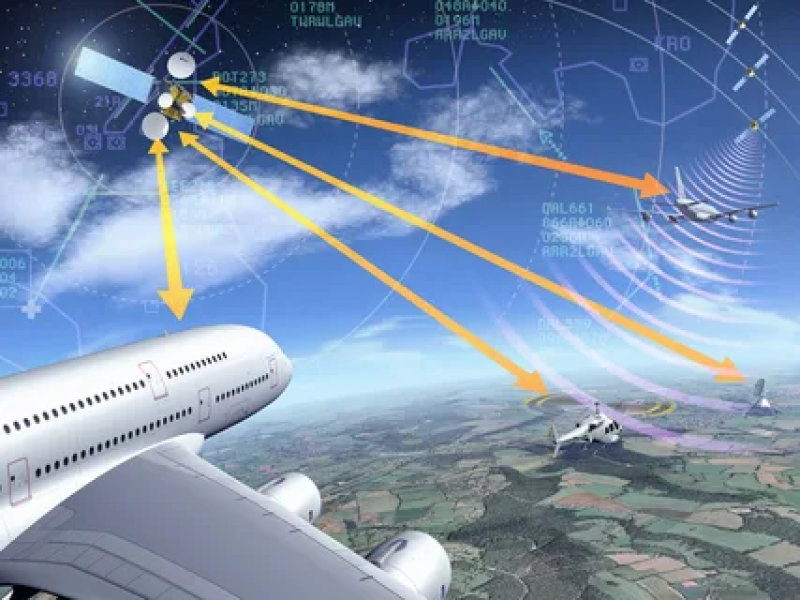Aircraft communication systems play a pivotal role in maintaining efficient, safe, and reliable communication between pilots, air traffic controllers, ground stations, and onboard systems. As aviation technology evolves, these communication setups have become increasingly sophisticated, encompassing a variety of digital and analog methods designed to ensure clear and uninterrupted information flow.
Overview of Aircraft Communication Systems and Their Functionalities
Advanced Aircraft Communication Systems primarily facilitate voice and data transmission necessary for navigation, flight operations, and air traffic management. Key components include Very High Frequency (VHF) radios, High Frequency (HF) radios, Satellite Communication (SATCOM) systems, and data link technologies such as Controller-Pilot Data Link Communications (CPDLC). VHF radios are the most commonly used for air-to-ground and air-to-air communication over shorter distances, operating efficiently within line-of-sight ranges. In contrast, HF radios offer long-distance communication capabilities, especially for transoceanic flights, albeit with potential interference challenges.
Satellite communication systems have revolutionized the aviation communication industry by providing global coverage and uninterrupted connectivity. These satellite-enabled networks allow airline operators and pilots to maintain real-time communication even in remote regions, boosting safety and operational efficiency. Data link systems further enhance communication by allowing textual data exchanges between cockpit and ground control, reducing radio congestion and improving message clarity.
Technological Advancements Shaping Modern Communication Systems in Aviation
The rapid technological evolution in digital communications has significantly influenced aircraft communication systems. Modern aircraft employ integrated avionics suites that support narrowband and broadband digital communication services. This includes the adoption of Automatic Dependent Surveillance-Broadcast (ADS-B), which enhances situational awareness by continuously broadcasting accurate aircraft position and other data to nearby aircraft and air traffic controllers.
Next-generation systems also incorporate cybersecurity measures to protect sensitive communication data from potential threats. The trend towards using Internet Protocol (IP)-based networks within aircraft communication architectures is gaining traction, enabling seamless integration of voice, video, and data services. Innovations in antenna design and signal processing technologies have improved the reliability and quality of communication channels, minimizing latency and dropouts in transmissions.
Enhanced Aviation Safety Through Reliable Communication Technologies
Communication is the backbone of aviation safety, and robust systems significantly reduce the risk of accidents and operational errors. Reliable communication allows pilots to receive timely weather updates, air traffic instructions, and emergency alerts. This capability is critical during adverse weather conditions, congested airspace operations, and emergency scenarios where rapid response coordination is necessary.
Moreover, real-time data link communication ensures precise navigation and efficient rerouting, reducing fuel consumption and flight delays. Aircraft communication systems also enable continuous monitoring of aircraft health and status by transmitting diagnostic data to ground maintenance teams. This proactive approach assists in reducing mechanical failures and enhancing overall safety standards.
Commercial Opportunities in Aircraft Communication Systems
The aircraft communication systems market is witnessing dynamic growth driven by increasing air passenger traffic, expanding commercial fleets, and rising investments in modernizing aging aircraft with advanced communication technologies. Airlines and aircraft manufacturers are prioritizing the integration of digital and satellite communication systems to meet stringent regulatory requirements and operational efficiency goals.
Significant commercial opportunities lie in the development and deployment of next-gen communication modules tailored for both commercial and military aviation sectors. This includes compact, lightweight hardware with enhanced connectivity features and interoperability across various aircraft platforms. Service providers offering end-to-end communication solutions, including installation, maintenance, and upgrades, are also gaining traction due to the growing need for system optimization and compliance with global aviation standards.
Exploring In-Depth Market Research Reports on Aircraft Communication Solutions
For those seeking a comprehensive understanding of the aircraft communication systems industry, highly detailed market research reports are available that analyze current trends, competitive landscapes, and future growth prospects. These reports provide valuable insights into technology adoption rates, regional market forecasts, and key vendor strategies that are reshaping the communication infrastructure in aviation.
Such in-depth data resources are crucial for stakeholders planning strategic investments, product development, or market entry initiatives in this highly specialized sector. Reading these extensive analyses can guide procurement decisions and innovation roadmaps by illuminating emerging market segments and regulatory influences.
Future Outlook and Emerging Trends in Aircraft Communication Technologies
Looking ahead, the continued integration of Artificial Intelligence (AI), machine learning, and Internet of Things (IoT) technologies into aircraft communication systems promises to create smarter, more adaptive communication networks. AI-powered communication management systems could optimize channel usage, predict communication failures, and automate routine transmissions, reducing pilot workload and enhancing situational awareness.
Furthermore, the expansion of global satellite constellations and 5G aerospace networks may result in ultra-high-speed data connectivity, supporting advanced applications such as real-time video streaming, augmented reality cockpit displays, and improved weather radar information. Environmental considerations are also driving the development of energy-efficient communication hardware and protocols, aligning with the broader aviation industry's goals of reducing carbon footprints.
Get This Report in Japanese Language: 高度な航空機通信システム
Get This Report in Korean Language: 고급 항공기 통신 시스템
Read More Articles Related to this Industry- 5 Best Practices for Ensuring Efficient Aircraft Maintenance, Repair, and Overhaul
About Author:
Ravina Pandya, Content Writer, has a strong foothold in the market research industry. She specializes in writing well-researched articles from different industries, including food and beverages, information and technology, healthcare, chemical and materials, etc. (https://www.linkedin.com/in/ravina-pandya-1a3984191)
